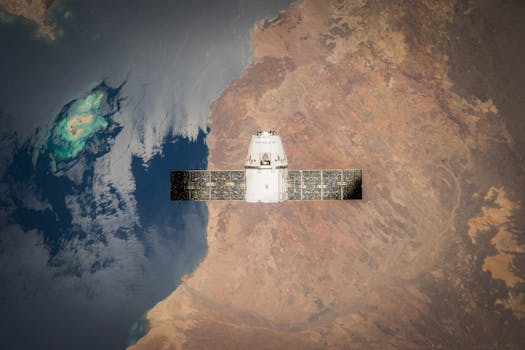
Eyes in the Sky: Advanced Technologies Transforming Earth Observation
Earth observation has become an essential tool for understanding our planet and its complex systems. With the help of advanced technologies, we can now monitor and analyze the Earth’s surface and atmosphere in unprecedented detail. Eyes in the Sky: Advanced Technologies Transforming Earth Observation is a crucial aspect of modern Earth science, enabling us to track changes in the environment, predict weather patterns, and manage natural resources more effectively.
Introduction to Earth Observation
Earth observation involves the collection and analysis of data about the Earth’s surface and atmosphere using remote sensing technologies. This can include satellite imagery, aerial photography, and other forms of data collection. The goal of Earth observation is to gain a better understanding of the Earth’s systems and processes, and to use this information to make informed decisions about environmental management, resource allocation, and other issues.
The use of Eyes in the Sky: Advanced Technologies Transforming Earth Observation has numerous benefits, including improved weather forecasting, enhanced natural disaster management, and more effective resource management. For example, satellite imagery can be used to track the movement of storms, monitor droughts, and predict crop yields. Additionally, Earth observation can help us to understand and mitigate the impacts of climate change, by providing data on sea level rise, glacier melting, and other indicators of climate change.
Advanced Technologies in Earth Observation
Recent advances in technology have greatly enhanced our ability to observe and understand the Earth. Some of the key technologies driving this transformation include:
High-resolution satellite imagery, which can provide detailed images of the Earth’s surface with resolutions of up to 30 cm. This allows for precise mapping and monitoring of environmental changes, such as deforestation, urbanization, and coastal erosion.
hyperspectral imaging, which can collect data on the Earth’s surface in hundreds of different spectral bands. This enables the detection of subtle changes in the environment, such as changes in soil moisture, crop health, and water quality.
Synthetic Aperture Radar (SAR), which can penetrate clouds and darkness, allowing for the collection of data in all weather conditions. This is particularly useful for monitoring areas with persistent cloud cover, such as tropical rainforests.
Artificial intelligence and machine learning, which can be used to analyze large datasets and extract insights from Earth observation data. This enables the automation of tasks such as image classification, change detection, and object recognition.
Applications of Earth Observation
The applications of Eyes in the Sky: Advanced Technologies Transforming Earth Observation are diverse and widespread. Some examples include:
Agriculture, where Earth observation can be used to monitor crop health, predict yields, and optimize irrigation. This can help to improve food security, reduce waste, and promote sustainable agriculture.
Disaster response, where Earth observation can be used to assess damage, prioritize response efforts, and allocate resources. This can help to save lives, reduce economic losses, and promote rapid recovery.
Environmental monitoring, where Earth observation can be used to track changes in the environment, such as deforestation, pollution, and climate change. This can help to inform policy decisions, promote sustainable development, and protect natural resources.
Urban planning, where Earth observation can be used to monitor urbanization, track population growth, and optimize infrastructure development. This can help to create more sustainable, resilient, and livable cities.
Conclusion
In conclusion, Eyes in the Sky: Advanced Technologies Transforming Earth Observation is a rapidly evolving field that is revolutionizing our understanding of the Earth and its systems. With the help of advanced technologies, we can now monitor and analyze the Earth’s surface and atmosphere in unprecedented detail, and use this information to make informed decisions about environmental management, resource allocation, and other issues.
As the field of Earth observation continues to evolve, we can expect to see new technologies and applications emerge, further enhancing our ability to observe and understand the Earth. By leveraging these advances, we can promote sustainable development, protect natural resources, and create a better future for all.




